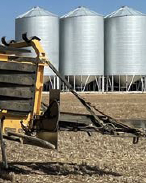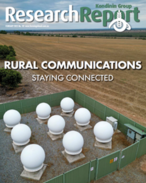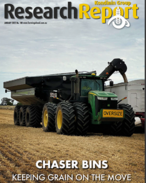This article is 4 years old. Images might not display.
The technology, which uses artificial intelligence, has been developed into a new product called ePaddocks, designed to save time for farmers and others in the agricultural sector when using digital services for farm analytics and insights.
Currently, farm management software requires users to manually draw paddock boundaries for every service they use, like satellite-assisted fertiliser application or crop growth monitoring, and they may have to update this information every growing season.
Unlike property boundaries, which are recorded in local council or title records, paddock boundaries aren't historically recorded anywhere.
CSIRO's ePaddocks can identify paddock boundaries from season to season but doesn't identify a particular property or landowner, or what paddock belongs to whom.
CSIRO remote sensing specialist Dr Franz Waldner said ePaddocks was highly accurate, detailed and available at the touch of a button.
"The satellite images we use, although publicly available, are cumbersome to download, store and analyse by the average person," Dr Waldner said.
"So we apply our deep neural network and algorithms to produce the paddock boundaries based on vegetation signatures and land features.
"Our method only needs one satellite image taken at any point in the growing season to distinguish the boundaries. It relies on data driven processes and decisions rather than assumptions about what's on the ground.
"Paddock boundaries have been highly sought after in the digital agriculture world for a little while now, but we've tackled it over the past year or so with new technologies and solved it. Our method will set the standard for similar geo-spatial products."
ePaddocks is available to purchase from the CSIRO's Ag Climate Data Shop https://acds.csiro.au/. Prices vary from $3500-$5000 per state or ePaddocks for all of Australia will cost $20,000.






















